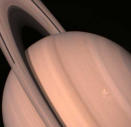|
|
|
| | | :: Saturday, February 22, 2003 :: |
Happiness Is A Smoking Gun
OK, among the things that bugs me most in the reaction to the Columbia investigation is the just deep-seated need by some in the news media to create this image of a "smoking gun" e-mail (I have to say that after a decade as a member of the press, it has been quite illuminating to now be involved in an agency that is on the receiving end of so much media attention, and I've really learned a lot. Number One thing I've learned: We were darned GOOD at what we did in Indianola.)
How many times in the past three weeks now have we seen stories about some new "internal NASA e-mail" that's been played like it's some supersecret document that NASA doesn't want the public to know about that shows that the agency knew that Columbia was going to be destroyed and was too callous or cheap or whatever to care. And then you actually read all the way through, and it's just not so. Heck, some of these supersecret documents NASA doesn't want you to know about were actually released to the public BY the NASA administration.
The ridiculous thing about the ongoing cycle is that there is a complete lack of learning going on. An e-mail is released in the press and made to be this huge smoking gun, NASA explains it, releases even more information beyond that, everybody's happy, and moves on. And then the next e-mail comes along, sometimes saying the exact same thing, and the cycle repeats.
To summarize: Yes, there were concerns about the possibility of damage to the orbiter. Yes, members of NASA looked at the what could happen if that were the case. Yes, there were some "worst-case" scenarios batted around the agency. Yes, people knew things could go wrong. But no, nobody had any idea the orbiter would be lost on re-entry. If you actually read the "worst-case" scenarios that were batted around, none of them dreamed what the actual "worst-case" would be. And I guaranty you, if they had, the agency would have DONE something. Even if they knew of nothing that would have worked, they would have tried. Even if they still ended up losing the craft and crew, they would have tried. Look back over the 40-something year history of NASA, and you know it's true. Heck, watch Apollo 13, and you'll know it's true. That wasn't just a movie, that was NASA.
Here's the key fact that most people forget: Things do go wrong. It happens, and it's generally not the end of the world. If you're driving your car, and you have a low-oil-level indicator, you're not going to fear for your life and immediately bail out, and you're not going to just assume that you're about to lose the vehicle. You're going to drive it home, or to the shop, or whatever, and do something about it. It's no different with the Shuttle. Just because you have a gauge saying something is wrong doesn't mean you automatically assume the Shuttle's about to disintegrate. It's a tough vehicle. It takes a lot of abuse. It's designed for things to go wrong, and is replete with reduntant systems so that things can go wrong. John Young once flew Columbia home with some of his back-up power systems on fire. But that's why it has back-up systems, and reduntant back-up systems. Heck, the tiles are the same way. The shuttle has lost tiles and pieces of tiles numerous times before. But it's designed so that it can lose tiles. And keep going.
So despite all the smoking guns, the truth is as simple as this: Something unexpected happened. And, you know, that happens sometimes. Maybe it was something they knew about that had undreamed-of consequences. Maybe it was something else they had no way of predicting. We don't know yet. But we're going to find out, fix it, and move on.
It's what we do.
:: back to blog front page ::
|
|


